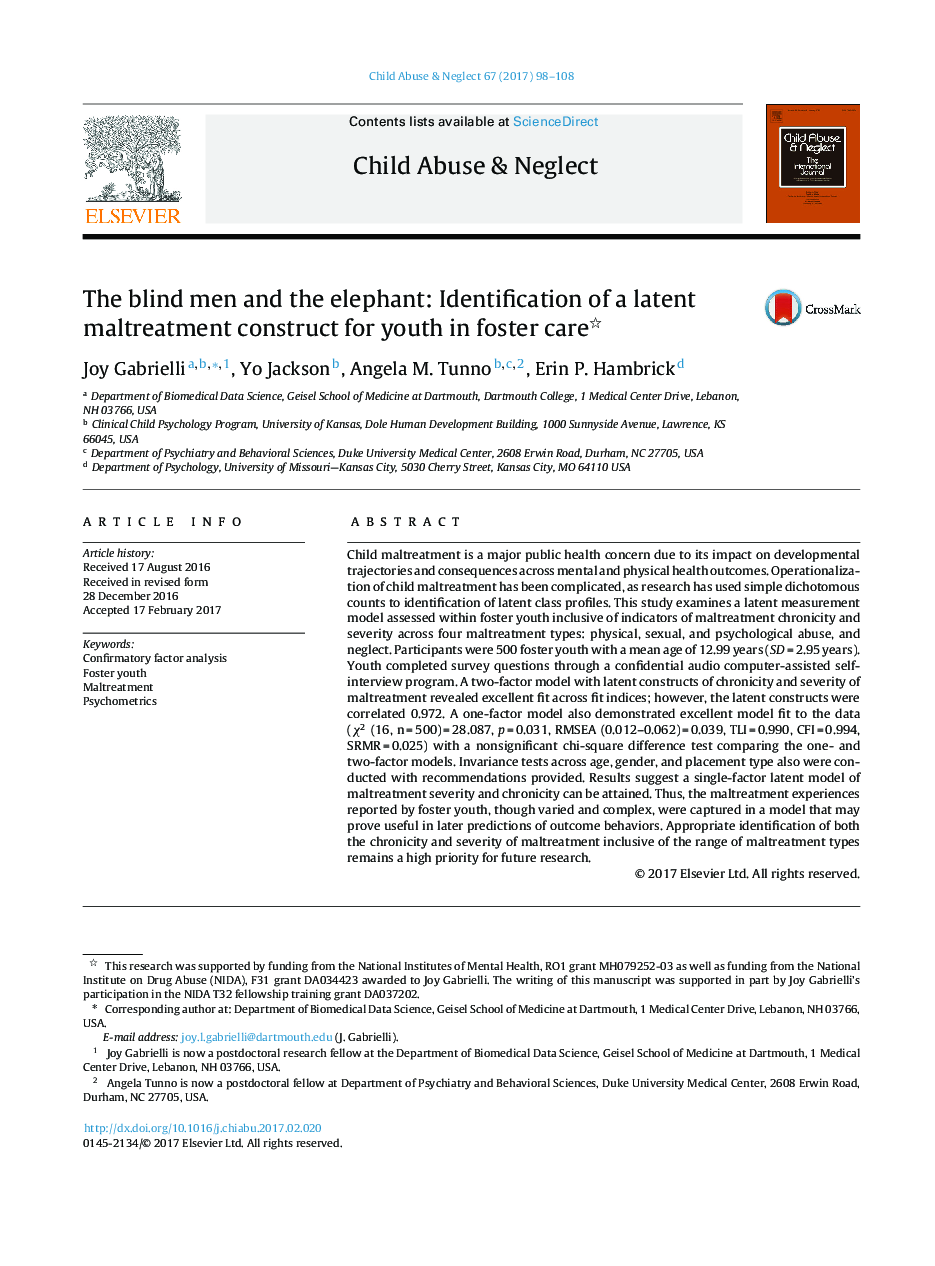| Article ID | Journal | Published Year | Pages | File Type |
|---|---|---|---|---|
| 4936038 | Child Abuse & Neglect | 2017 | 11 Pages |
Abstract
Child maltreatment is a major public health concern due to its impact on developmental trajectories and consequences across mental and physical health outcomes. Operationalization of child maltreatment has been complicated, as research has used simple dichotomous counts to identification of latent class profiles. This study examines a latent measurement model assessed within foster youth inclusive of indicators of maltreatment chronicity and severity across four maltreatment types: physical, sexual, and psychological abuse, and neglect. Participants were 500 foster youth with a mean age of 12.99 years (SD = 2.95 years). Youth completed survey questions through a confidential audio computer-assisted self-interview program. A two-factor model with latent constructs of chronicity and severity of maltreatment revealed excellent fit across fit indices; however, the latent constructs were correlated 0.972. A one-factor model also demonstrated excellent model fit to the data (Ï2 (16, n = 500) = 28.087, p = 0.031, RMSEA (0.012-0.062) = 0.039, TLI = 0.990, CFI = 0.994, SRMR = 0.025) with a nonsignificant chi-square difference test comparing the one- and two-factor models. Invariance tests across age, gender, and placement type also were conducted with recommendations provided. Results suggest a single-factor latent model of maltreatment severity and chronicity can be attained. Thus, the maltreatment experiences reported by foster youth, though varied and complex, were captured in a model that may prove useful in later predictions of outcome behaviors. Appropriate identification of both the chronicity and severity of maltreatment inclusive of the range of maltreatment types remains a high priority for future research.
Related Topics
Health Sciences
Medicine and Dentistry
Perinatology, Pediatrics and Child Health
Authors
Joy Gabrielli, Yo Jackson, Angela M. Tunno, Erin P. Hambrick,
